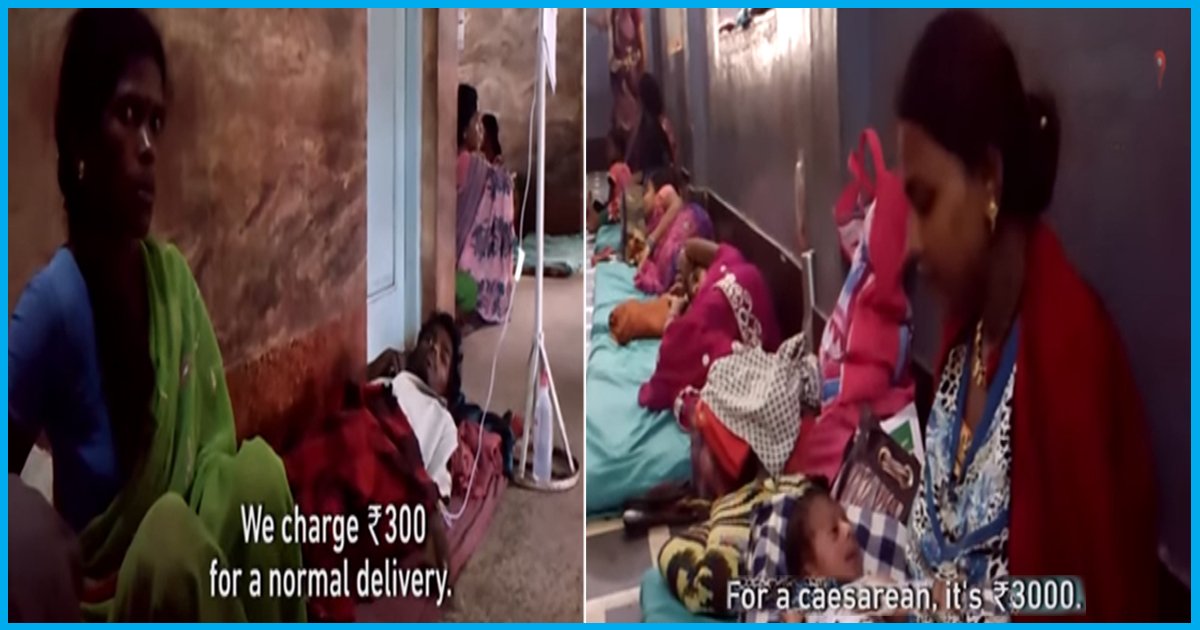
Chhattisgarh: When Mine Workers Came Together To Build A Hospital Of Their Own
14 Dec 2017 6:44 AM GMT
Chhattisgarh: When Mine Workers Came Together To Build A Hospital Of Their Own

From our friends at
Video Volunteers
December 14th, 2017
In June 1977, less than three months after the Emergency was lifted, the police opened fire on a group of workers protesting against the injustice they faced during the Emergency. The workers were agitating under the Chhattisgarh Mines Shramik Sangh (CMSS), led by Shankar Guha Niyogi. Shaheed Hospital, the brainchild of Niyogi, today stands tall in memory of the 11 mine workers who lost their lives in the firing in Dalli Rajhara, Chhattisgarh.
The hospital was inaugurated by Lahar Singh and Halal Khor, a labourer and a farmer, symbolising worker-peasant unity.
Shankar Guha Niyogi, Niyogiji to the mine workers in the region, was a labour union leader who mobilised workers and farmers in the mineral-rich heartland of Chhattisgarh and founded the Chhattisgarh Mukti Morcha as the political front of the CMSS. Moved by the death of a comrade owing to pregnancy complications and determined to work for healthcare, he laid the foundation of Shaheed Hospital along with a committee of 109 labourers and doctors like Saibal Jana and Binayak Sen.
The hospital was inaugurated in 1983 by Lahar Singh and Halal Khor, a labourer and a farmer, symbolising worker-peasant unity in the struggle for rights. It opened with 16 beds and an outdoor dispensary. Since then, many things have changed and many remain the same. Niyogi was assassinated by a group of industrialists in 1991; both Sen and Jana have been controversially arrested and subsequently released on charges of sedition and in a case related to police firing, respectively.
In the meantime, the hospital has grown to have three storeys and is offering different kinds of specialised care, and even today, working on the principle of providing affordable and respectful care.
“Shaheed Hospital belongs to the people.”
Community Correspondent Reena Ramteke visited the hospital and spoke to Jana, who is now the key person running of the hospital, along with nurses and patients. “What struck me was the respect with patients are being treated. No one is turned away even if they come after working hours”, says Reena, adding that the hospital is particularly popular amidst those seeking maternal healthcare. Quality of care and respectful care, studies have found, affect women’s decision to seek maternal health. Writer Dilip D’Souza, in his book The Curious Case of Binayak Sen, follows Jana through his working day, painting a clear picture of the work and ethos of the hospital.
Watch Community Correspondent Bhan Sahu’s profile of Shaheed Hospital
The other thing that makes Shaheed Hospital stand out is the respect for people’s indigenous and age-old practices of care. Although primarily engaging in allopathic care, the hospital also provides ayurvedic care and encourages patients to use homemade remedies as well. In an increasingly corporatised healthcare environment driven by the interests of large pharmaceuticals, the model that the hospital follows is rare. “There are many hospitals owned by corporates in the area but no one supports the poor”, says Alpana Jana who has worked with the hospital since its inception.
What does it require to sustain an alternative model of healthcare that Shaheed Hospital embodies? “The biggest challenge we face is hiring enough doctors, few people want to work in a set-up like this”, says Jana.
Jana talks about the difficulty of finding doctors who will “give time, think of the patients.”
Chaitram, a member of the CMSS who built the hospital along with his fellow union members, recounts the time, “We contributed whatever little we could to the hospital, both money and labour. And we never felt tired, because we were building the hospital for our people and for generations to come.” But today, it is not as easy to mobilise on such a scale or find doctors and volunteers who will remain committed to the hospital. In D’Souza’s book, Jana talks about the difficulty of finding doctors who will “give time, think of the patients.”
“The movement is not so strong anymore, so we don’t have enough people”, says Amar Bai, an activist from the Chhattisgarh Mukti Morcha. Her message to the new generation– “Make Niyogiji’s dream come true, there is a lot of strength in unity.”
Despite the challenges that it faces today, Shaheed Hospital is still a shining example of a community health model that puts people at the centre of healthcare.
Video by Community Correspondent Reena Ramteke: She belongs to a remote village of 60 families in the district of Ghariaband in the state of Chhattisgarh in eastern India. The region that she lives in is heavily forested. Basic amenities like water, electricity and roads are lacking or altogether absent. Life is difficult, poverty is rife. The state is hell-bent on exploiting the forests and the mineral-rich land. There is state violence and caste violence. “People in my district face a lot of problems. The denial of forest rights is a major issue. Though the Kamar people are the indigenous inhabitants of the land, they are…
Article by Alankrita Anand, a journalist in the VV editorial team.
 All section
All section














